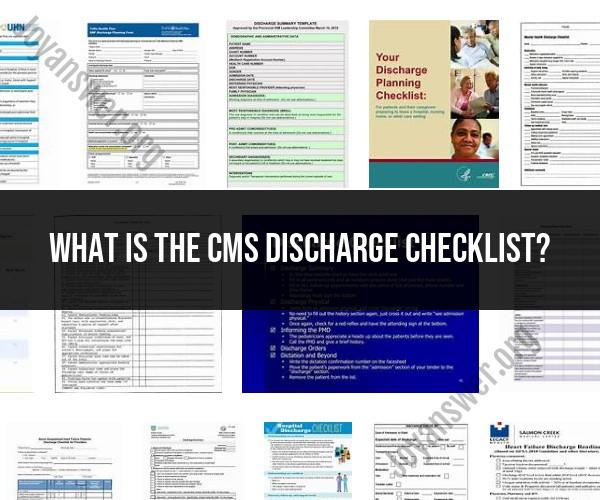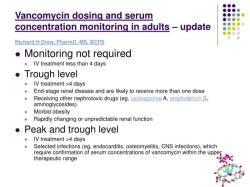What is the CMS discharge checklist?
The CMS (Centers for Medicare & Medicaid Services) Discharge Checklist is a tool used in healthcare settings, particularly in hospitals, to ensure that patients are discharged safely and that all necessary steps and information are provided to them as they transition from the hospital to their homes or other care facilities. CMS is a federal agency within the United States Department of Health and Human Services responsible for administering the nation's major healthcare programs, including Medicare and Medicaid.
The CMS Discharge Checklist typically includes a set of standardized guidelines and procedures that healthcare providers should follow when discharging a patient. The checklist aims to enhance patient safety, improve the quality of care, and reduce the likelihood of adverse events following discharge.
Elements commonly found on a CMS Discharge Checklist may include:
Medication Reconciliation: Ensuring that the patient understands their prescribed medications, any changes in medication, and the correct dosages. Medication lists are often reviewed and updated.
Follow-Up Appointments: Scheduling and explaining any necessary follow-up appointments with primary care physicians, specialists, or other healthcare providers.
Discharge Instructions: Providing the patient and their caregivers with clear, written discharge instructions. This may include information on post-discharge care, dietary restrictions, activity limitations, and warning signs to watch for.
Medical Equipment and Supplies: Ensuring that the patient has access to any necessary medical equipment, supplies, or medications upon discharge, and providing instructions on their use.
Transition of Care: Coordinating the transfer of medical records and care plans to the patient's primary care physician or relevant healthcare providers.
Patient Education: Educating the patient and their caregivers on managing their condition, recognizing signs of deterioration, and adhering to the recommended care plan.
Advance Directives: Reviewing and documenting any advance directives or healthcare proxy decisions the patient has made.
Transportation: Arranging for safe transportation for the patient if needed, especially if they are unable to drive themselves.
Communication: Ensuring that the patient and their caregivers have contact information for reaching healthcare providers in case of questions or concerns.
Patient Consent: Obtaining the patient's informed consent for discharge and any related procedures.
Home Environment: Assessing the patient's home environment to ensure it is safe and suitable for their condition.
The specific content and format of a discharge checklist can vary between healthcare facilities, but they are typically designed to align with CMS regulations and quality improvement initiatives aimed at enhancing the patient's care experience.
Using a discharge checklist helps healthcare providers ensure that patients leave the hospital with the information and resources they need for a successful transition to post-hospital care, reducing the likelihood of readmissions and improving overall patient outcomes.











